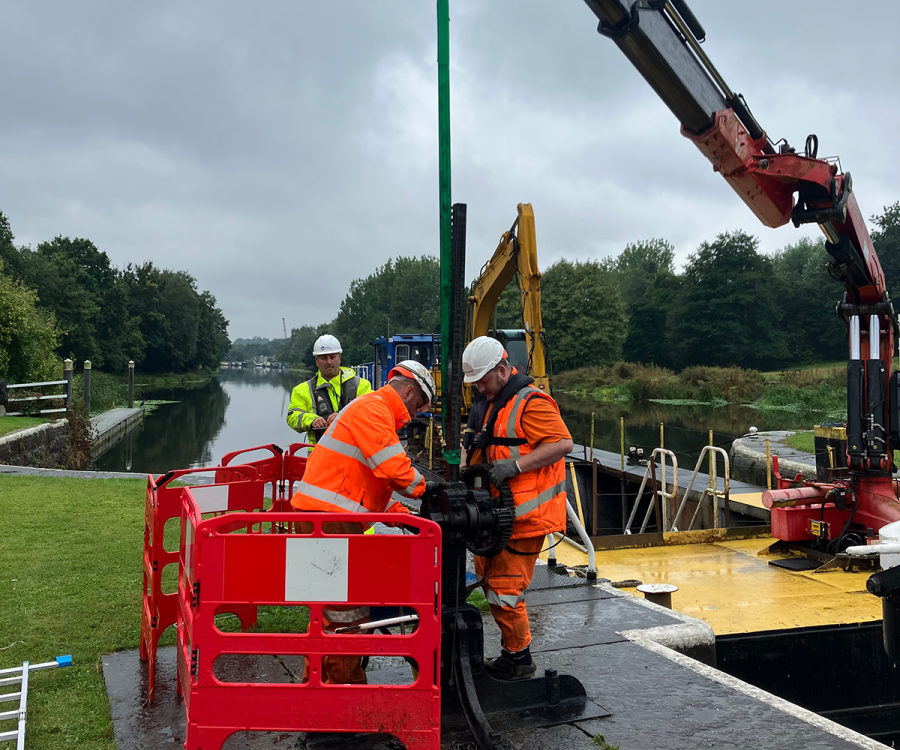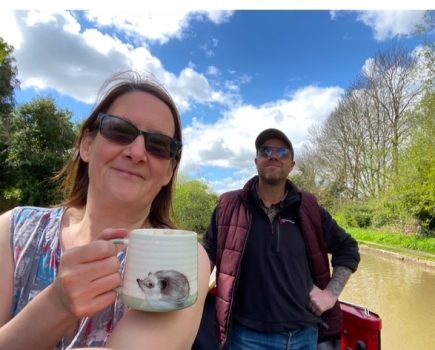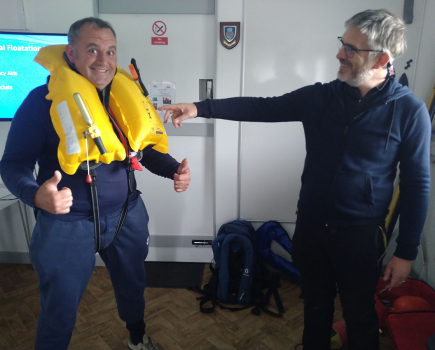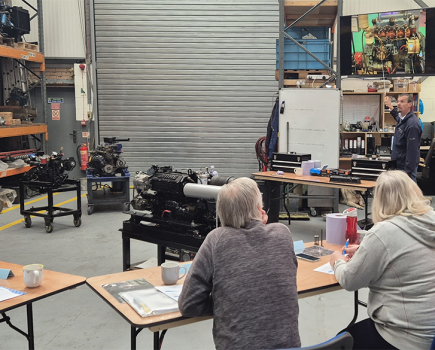Hunts Lock in Greenbank on the Weaver Navigation reopened to boaters on 11 September after the Canal & River Trust called on a team of experts to improve navigation.
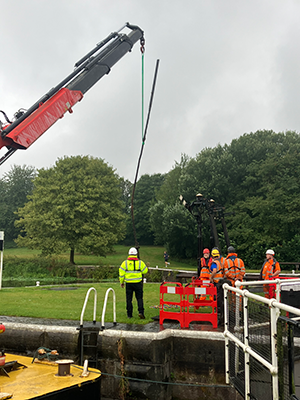 The charity, which is responsible for the nation’s 250-year-old canal, brought in a host of specialists, including divers, crane boat operators and carpenters to fix the faulty lock. Divers carried out a ‘below the waterline’ investigation and removed the lock’s top paddles. They were sent to the Canal & River Trust’s workshop for extensive repairs, including brand new steel work and timber, so the paddles could continue to serve their purpose controlling water levels in the lock.
The charity, which is responsible for the nation’s 250-year-old canal, brought in a host of specialists, including divers, crane boat operators and carpenters to fix the faulty lock. Divers carried out a ‘below the waterline’ investigation and removed the lock’s top paddles. They were sent to the Canal & River Trust’s workshop for extensive repairs, including brand new steel work and timber, so the paddles could continue to serve their purpose controlling water levels in the lock.
The Canal & River Trust’s team of carpenters freshly crafted wooden parts to the paddles, which were then carefully added to the new steel framework and finally put back in position by the divers. Accessing the site is tricky, so the charity’s team brought in a crane boat to lift the paddles and the steel rod that operates them, with the eventual cost of repairs totalling around £10k.
The Weaver Navigation has a rich history. For centuries, the River Weaver was used for the transport of salt. Improvements along the river were planned as early as the 17th century, as sailing barges began navigating along the Weaver from the Mersey to Winsford, bringing coal in and salt out. Various Acts authorised improvements, allowing the salt industry to prosper, and throughout the 19th century, the navigation was consistently profitable. The formerly tidal Weaver below Pickerings Wharf underwent substantial modification.
The area became known for the production of other chemicals on increasingly larger scales, and it became commonplace to see vessels of 500 tons or more navigating far inland. The extraordinary Anderton Boat Lift was designed to connect the Weaver Navigation with the Trent & Mersey Canal running more than 50 feet (15m) above. It opened in 1875 and, following a restoration 22 years ago, boaters are still able to use the lift today.

Old and new panels
Darren Thomas, senior M&E engineer at Canal & River Trust, said: “The Weaver Navigation is a fantastic place to visit by boat. The Anderton Boat Lift is one of the wonders of the waterways and something every boater should experience, while the history of the Weaver itself has created habitats for coastal plants and a rich array of birdlife, making it a fascinating place to explore.
“The repair at Hunts Lock, carried out by a team of specialists, shows just how many people are involved in keeping the waterways open for navigation. We hoped the divers would be able to carry out repairs underwater, saving time and money, but in the end the damage was too extensive, and we opted to replace both top paddles. Handcrafted in our specialist workshops, these new paddles will help control water levels for years to come.
“This repair is just one example of the hundreds of jobs we carry out every year to maintain our ageing network. We look after the third largest collection of listed structures in the country, still navigated by boaters as they were 200 years ago, and open to the elements every day of the year. We are working with the new government to establish an active partnership to safeguard the future of the canal network, and we welcome support from the public to keep canals alive.”
To support Canal & River Trust, please visit: Support us | Canal & River Trust (canalrivertrust.org.uk)

